Technicolor Broadway
On The Town, Gigi, and An American in Paris
Three musicals have opened this season on Broadway that have so much in common that they could make it into one of those old Ripley’s Believe It or Not! cartoons. All three are descended from movie musicals that the MGM movie studio made in Technicolor within nine years of one another. Gigi and An American In Paris had the same director (Vincente Minnelli), same star (Leslie Caron) and same setting (Paris), and both won the Academy Award for Best Picture. (And the Broadway adaptations opened within four days of one another this month.) An American in Paris and On The Town had the same co-star (Gene Kelly).
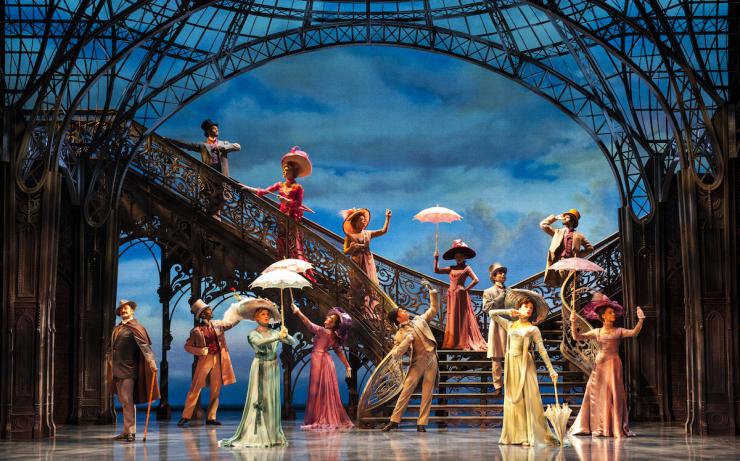
Whatever I may think of the stage versions—I loved both On The Town and An American in Paris, but was mostly disappointed by Gigi —I’m left wondering why all three of these musicals have been remade this particular season. Is it just a coincidence?
“I do think it’s a coincidence. The stars seem to have aligned this season for a reason I can’t really explain,” says Joshua Bergasse, the choreographer for both On The Town and Gigi. “There is a nostalgia for this type of show,” says Jason Lyons, the lighting designer for On The Town.
Yes, but why?
They all have pleasing scores, from some of Broadway’s (and America’s) best songwriters—Leonard Bernstein (On The Town), Lerner and Loewe (Gigi), and George and Ira Gershwin (An American in Paris). But so do many Broadway revivals, or “revisals.” Why these now? Could it be the stories they tell?

In On The Town, three sailors during World War II are on shore leave in New York City for twenty-four hours; each of them finds a dame for the day, and then returns to the Brooklyn Navy Yard and their ship. In Gigi, two aging courtesans offer etiquette lessons to their relative, Gigi, in hopes that the young woman will snare a rich man. She resists becoming the mistress of a dashing friend of the family, to the exasperation of her grandmother and great aunt. In An American in Paris, three men, all of them artists, vie for the affection of a young woman named Lise after World War II.

The war hung over each of these stories, in very different ways. On The Town opened on Broadway in 1944; the movie was released in 1949. Colette wrote her novella Gigi in Nazi-occupied France, hearkening back to a more elegant time some four decades earlier (though the 1958 movie has few clues as to the circumstances of the story’s creation). In An American in Paris, the Americans are recent G.I.’s who have decided to stick around; a central element of the plot involves the paying off of a debt incurred during the war.
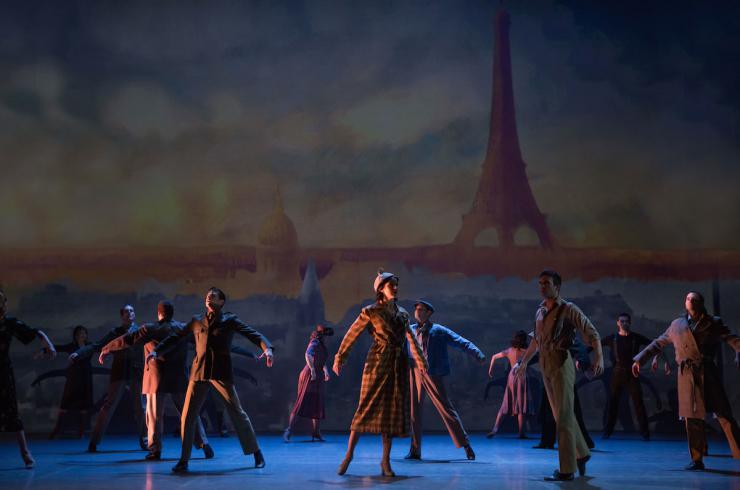
The time that elapsed between World War II and these movies was roughly the time that has elapsed between the Great Recession and these Broadway musicals. Could we be trying to chase that shadowy memory away?
There are shadows at the edge of each of these movies—a recent darkness that perhaps the movies’ super-saturated colors were trying to bleach away. But is there any similarity to our own era? The time that elapsed between World War II and these movies was roughly the time that has elapsed between the Great Recession and these Broadway musicals. Could we be trying to chase that shadowy memory away?

There are some clues that the producers of the current musicals did not see the stories as holding any special appeal, since each show hired writers to revise their books. The changes are intriguing. An American in Paris the stage musical is actually darker than the movie. The time has changed to right at the end of the war rather than five years later, and the show features Nazi flags being torn down and their collaborators being shamed. There is a subtler effort in On The Town to remind us of the war-time that the sailors are trying to forget: The revival recreates the atmosphere of the original Broadway production, displays a huge American flag (with forty-eight stars), and replaces the original overture with “The Star-Spangled Banner”—for which the audience stands up dutifully. Gigi’s approach is the precise opposite—at the end of the show, bubbles descend upon our heads; the show has been scrubbed clean of anything dark; all is elegance and champagne; it would take a sharp-eyed theatregoer to realize that those charming relatives are actually prostitutes.
Instead of the stories, then, could it be the look—the fashion, design, and light of that era and those movies? Could we be living in a Technicolor age?
“I think there is an essence of the ‘Technicolor era’ feel in a lot of what we do in theatrical lighting,” Lyons, the lighting designer, replied to my inquiries. “We are adding color and light that may not be there naturally. It often has a heightened sense that is reminiscent of the Technicolor technique.” But then he said: “For On The Town, we definitely wanted a feel that would still elicit thoughts of that period, but then push it into a more contemporary vocabulary to help have it be more relatable to today’s audience.” In other words, no, we are not living in a new Technicolor era.
Lyons had a simpler explanation:
There has been a really great resurrection of dance in pop culture due to shows like So You Think You Can Dance, Dancing with the Stars, and Glee… and I think it has brought the dance musical and great classic choreography back to the forefront.
All three musicals do emphasize the dancing, though Gigi not as prominently as the other two, which are largely indistinguishable from contemporary ballets. “I think the dancing does have something in common in these three adaptations,” Bergasse the choreographer says, “and that’s that it’s all story-driven movement. It’s really connected to what’s happening in the plot.”
It’s also not just conventional Broadway tap dancing. Christopher Wheeldon, making his Broadway directorial debut in An American in Paris, has spent most of his life in the ballet world, first as a dancer with the Royal Ballet and the New York City ballet, then as a much sought-after ballet choreographer.
The principal performers, Robert Fairchild in An American in Paris and Megan Fairchild in On the Town, are professional ballet dancers, with no previous professional experience in acting or singing. Even more deserving of a Ripley’s Believe It or Not! comic, Robert Fairchild and Megan Fairchild are brother and sister.
There were similar interconnections in the movies of the 1950s. “Many of the MGM Technicolor movies were choreographed by the same handful of choreographers at that time,” Bergasse says. “And the performers crossed over from film to film as well.”
Coincidentally or not, a new generation of Broadway theatre artist seems suddenly to have brought their Technicolor memories onto the Great White Way. “I was a big fan of the MGM Technicolor movies growing up, like An American in Paris and The Band Wagon,” Bergasse says. “I loved all the musical numbers and dream ballets, the style of the choreography and the athleticism and wit of the dancers. I dreamt of someday being part of bringing that back to Broadway.”


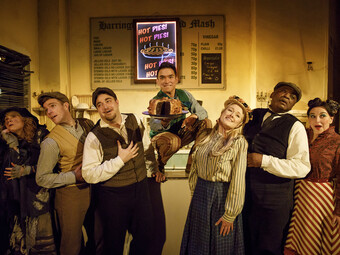

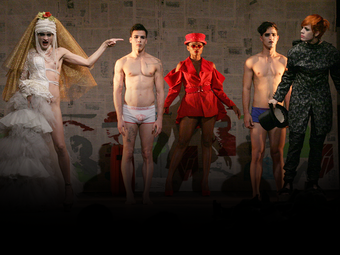

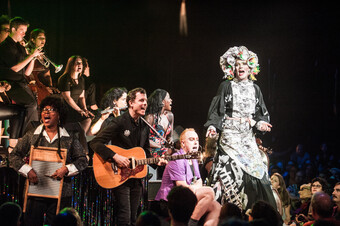

Comments
The article is just the start of the conversation—we want to know what you think about this subject, too! HowlRound is a space for knowledge-sharing, and we welcome spirited, thoughtful, and on-topic dialogue. Find our full comments policy here